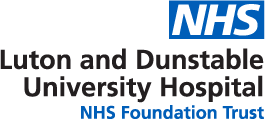By continuing to use the site, you agree to the use of cookies. You can find out more by following this link - Close
Autologous breast reconstruction involves moving your own tissue from elsewhere and using it to create a breast mound. The tissue used can be skin and fat and often contains some muscle also. Common sites to provide the tissue are your back, abdomen, buttocks or thighs. An autologous reconstruction tends to create a more natural feeling breast than an implant reconstruction and there may be less need for further ‘upkeep’ surgery in the future than there would be after implant surgery. However, it is more complex surgery and involves creating additional scars on your body and a ‘donor site’ where the tissue has come from which may have its own problems with healing and pain after surgery. An autologous reconstruction is likely to be longer to carry out, involve a longer stay in hospital and a longer recovery period than implant reconstruction.
The tissue that is moved will need to have a blood supply. This can be the same blood supply that it has always had because the flap remains partially attached at one end. This would be called a ‘pedicled flap’ and an example would be a Latissimus Dorsi reconstruction or a pedicled TRAM flap reconstruction. Because the tissue is still partially attached in a pedicled flap the blood supply is robust and unlikely to fail.
Alternatively the blood supply to a flap can be completely detached and then reattached to blood vessels in the chest area, usually that run under the ribs. This is lengthy and complex surgery as the blood vessels are small and have to be joined together by operating down a microscope. An example would be a DIEP reconstruction. The advantage of this type of ‘free flap’ is that very little, if any, muscle needs to be moved, so the flap is entirely made of fatty tissue which is very like breast tissue, and there is no weakness from moving muscle away from its normal site.
Other types of free flaps use fat, skin and muscle from the thigh; these are known as TUG (transverse upper gracilis) flaps. Free flap surgery is available to our patients and is carried out at the Royal Free Hospital by Mr Sojitra and his team. Latissimus Dorsi reconstruction is available at Luton carried out by the Breast Surgeons.

